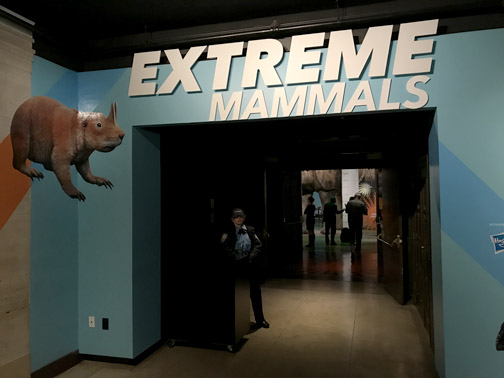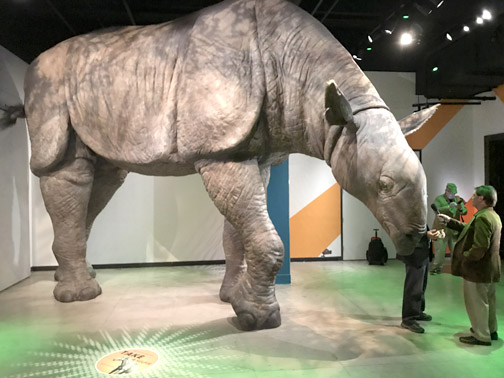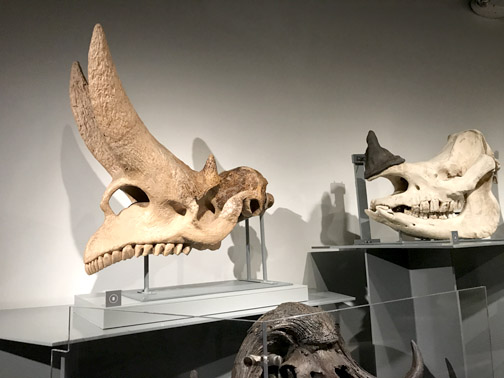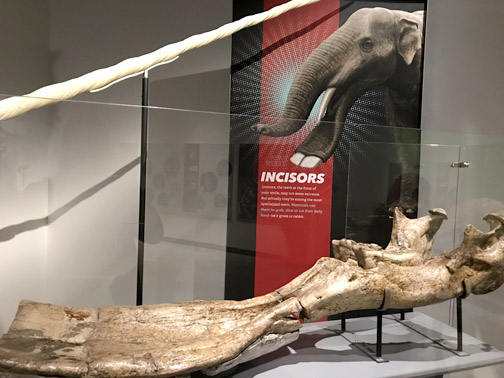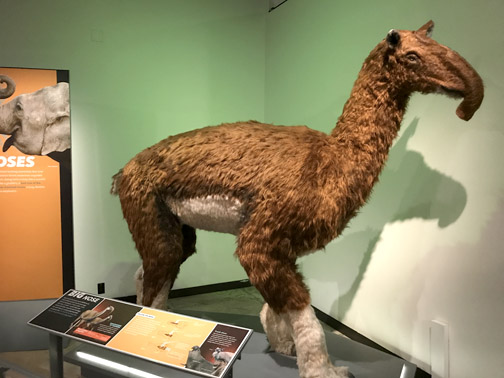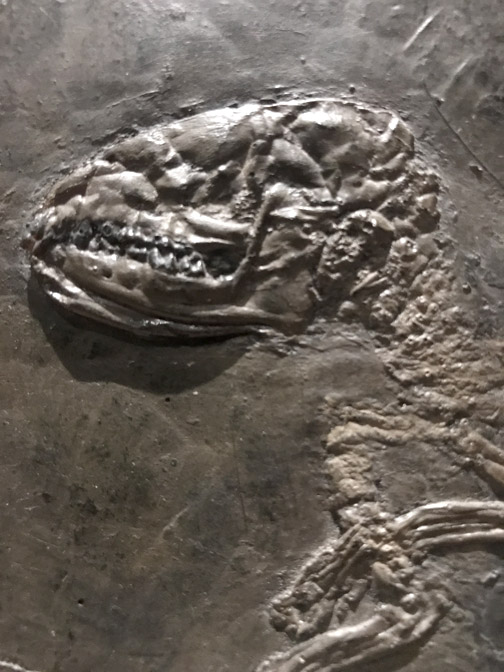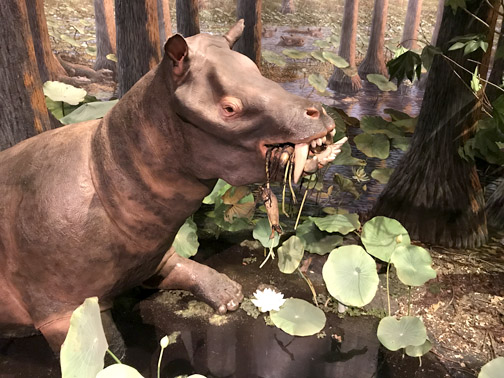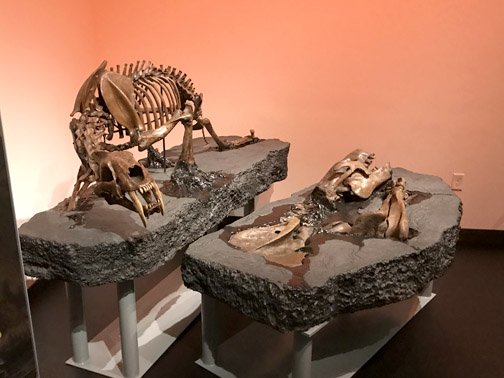
This rhino cousin, the Indricotherium, gave up his horn and grew to almost 20 feet tall.
By Charly SHELTON
When one thinks of mammals, the characteristics that pop to mind are small, fuzzy, warm-blooded creatures that survived the K-T extinction that killed (most of) the dinosaurs 65 million years ago. Mammals went on to become the dominant class on the planet, and these fuzzy little guys evolved to become fuzzy big guys like the wooly mammoth, the ground sloth and the saber-toothed cat, and some slightly less fuzzy guys like Homo sapiens, or humans. While all of that is true, there were a lot of branches off along the way. Mammals are a much more diverse class than most of us realize. So when the Natural History Museum of Los Angeles County brings a new exhibit on “Extreme Mammals,” it’s like walking back through our ancestry in the weirdest family reunion ever.
There are those immediate family members from whom we can claim direct descent, like the Repenomamus robustus, a cat-sized mammal that lived in the Cretaceous period (130 million years ago) in what is now China and hunted small dinosaurs. There are those venerated elders who are much older and maybe aren’t much like these mammals today, but still part of the family and your heritage – like Dimetrodon, the early synapsid with a huge sail on its back, from the time before dinosaurs (285 million years ago). There is the cousin who took a different turn somewhere along the path, lost almost all his fur and became a rhinoceros. But he isn’t nearly as weird as the rhino cousin who gave up his horn and grew to almost 20 feet tall, Indricotherium. Or the rhino that wanted a flashy new do, so he grew four horns, two small and two larger than his skull – Arsinoitherium.
The successful rebels are here too like Ambulocetus, the whale that wanted to walk on land and was a successful hunter in and out of the water. Or the Platybelodon, an elephant that wanted to be a shovel, so its tusks became two fused, flat shovel-like teeth beneath his trunk. Or the Coryphodon, the saber-toothed hippo that stalked the plants of swamps across the northern hemisphere. It’s not really a rebel, just a weird saber-toothed hippo. And the invite went out to the extended family from Australia, the Marsupials. They have built-in pouches for their babies to hang out in, but they are as much a part of the mammal family as anyone. Even the Chinese pangolin, which looks like an armadillo on steroids with claws, is a mammal and welcomed to the party.
Of course, we have to say goodbye to some of the relatives we’ve lost to extinction recently – like the Tasmanian wolf. It went extinct in 1936, and many more are facing the same fate today. Our condolences to its marsupial family. It joins the ranks of all those that have come before and met extinction either at the hands of human interference or nature itself. One relative in particular is of concern to local mammals to stem the tide of extinction – the mountain lion P-22. It is being tracked by scientists to learn more about its habits and behaviors to better protect our urban wildlife.
So from the largest mammal to ever walk on land – Indricotherium – to the smallest mammal to ever live – a fuzzy little mouse-like guy named Batodonoides that was only 1.5 inches including tail – and everything in between, a good selection of the most extreme mammals are on display at the Natural History Museum beginning Sunday, May 14 and running through Sept. 10. Be sure to stop by and meet some long lost relations.
For more information and tickets, visit NHM.org.

